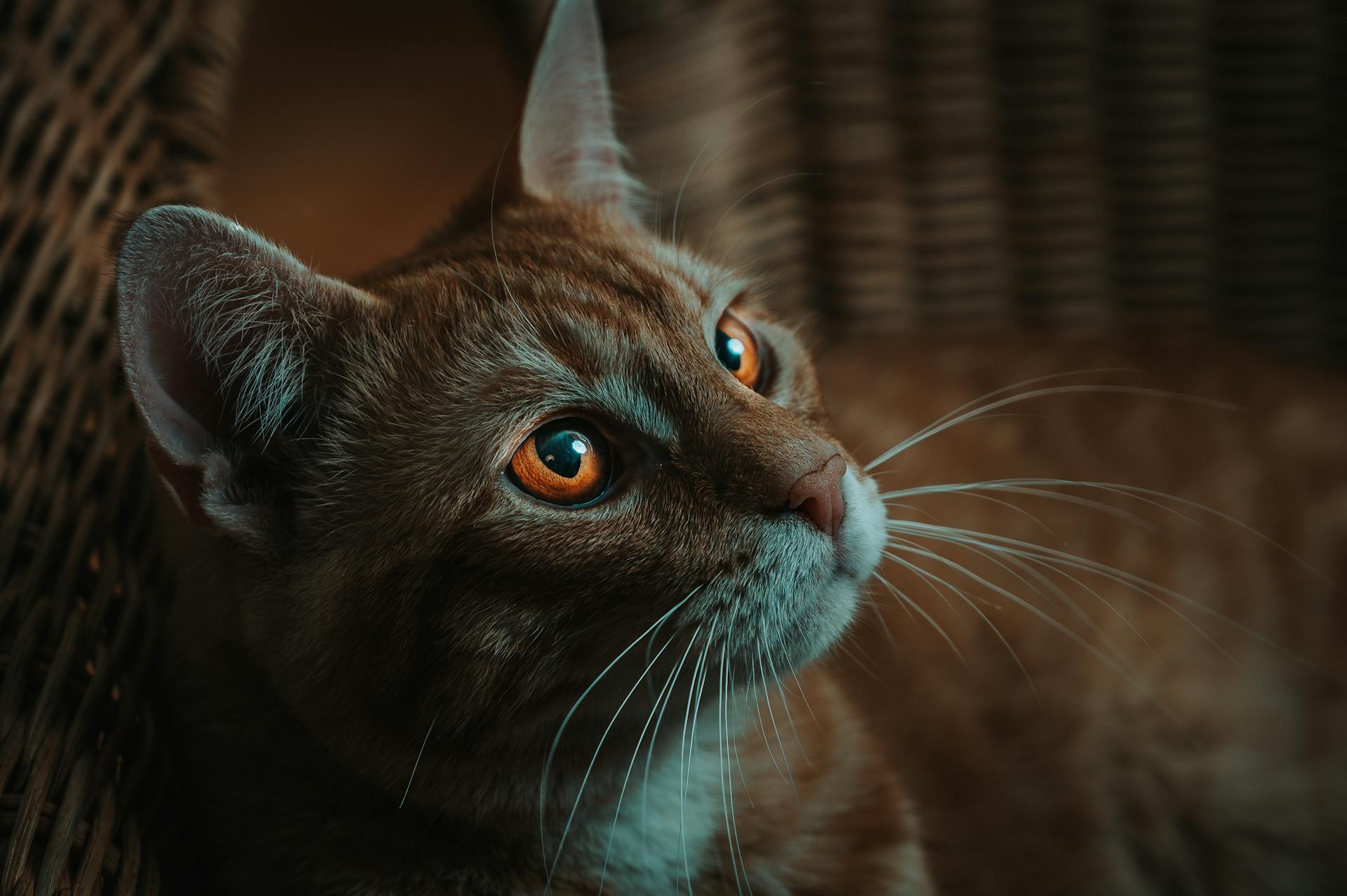Monitoring your cat’s breathing rate can be a vital indicator of their overall health. Delving into your feline’s respiratory patterns might seem daunting, but it’s incredibly valuable. This guide simplifies the process, enabling you to spot potential issues at home. By understanding the signs and learning what to observe, you can become an essential advocate for your cat’s well-being. Empower yourself with knowledge and keep your feline friend healthy and happy.
Understanding Normal Breathing Rates in Cats
A normal breathing rate is essential for monitoring your cat’s overall health. Typically, a cat’s normal respiratory rate ranges from 20 to 30 breaths per minute when at rest. This baseline measurement is crucial as it serves as a reference for identifying any deviations that might indicate health issues.
Sujet a lire : Essential Tips for Caring for Your Cat”s Whiskers: Enhancing Their Sensory Health
Several factors can affect a cat’s breathing rate. Physical activity, stress, and temperature changes can cause temporary increases in respiratory rate. It’s important to note that a persistently high or low rate could be a sign of underlying health problems, such as respiratory infections or heart disease.
Establishing a baseline measurement of your cat’s normal breathing rate is vital. It allows you to detect changes early and seek veterinary advice promptly if necessary. Monitoring should be done when the cat is calm and resting, ensuring the most accurate assessment of its respiratory health.
A lire aussi : Crafting an Effective Flea and Tick Prevention Strategy for Cats that Enjoy the Outdoors
By understanding your cat’s normal breathing rate and the factors that can influence it, you can take proactive steps in maintaining its health. Regular monitoring and awareness can lead to early detection of potential health issues, ensuring your feline companion remains healthy and happy.
Step-by-Step Guide to Monitoring Your Cat’s Breathing Rate
Monitoring your cat’s breathing rate is a simple yet effective way to assess cat health. It involves observing and recording your pet’s respiratory patterns to identify any potential health issues early.
Preparing to Monitor
Begin by ensuring your cat is in a calm environment. This reduces stress and provides a more accurate measurement. Choose a time when your cat is resting, such as after a meal or during a nap. This helps in obtaining the baseline breathing rate without external influences.
Techniques for Accurate Measurement
To accurately measure your cat’s breathing rate, count the number of breaths for 15 seconds and multiply by four. A breath is counted each time the chest rises. Repeat this process a few times to ensure consistency. Use a stopwatch or timer for precision.
Recording and Interpreting Results
Keeping a log of your observations is crucial. Record the date, time, and rate of breathing. Note any factors like recent activity or stress, which might affect the rate. Over time, this log helps in identifying patterns or deviations from the norm. If you notice persistent changes in the breathing rate, consult a veterinarian to assess your cat’s health further.
Identifying Signs of Respiratory Distress
Recognizing respiratory distress signs in cats is crucial for maintaining their health. Cats often exhibit certain behaviours when experiencing respiratory issues. For instance, increased restlessness or reluctance to move can indicate discomfort. Additionally, open-mouth breathing, especially when not associated with recent physical activity, is a significant cat health indicator.
Common Behaviours Indicating Respiratory Issues
Cats may show subtle changes in behaviour that suggest respiratory problems. These include hiding more frequently, decreased appetite, or vocalizing more than usual. Such behaviours can be early signs of distress, prompting the need for closer observation.
Physical Signs to Look For
Physical indicators of respiratory distress include rapid or laboured breathing, nasal discharge, and coughing. Observing these signs, especially if persistent, is vital for assessing your cat’s respiratory health. Blue-tinged gums or tongue are severe indicators requiring immediate veterinary attention.
Importance of Early Detection
Early detection of respiratory distress signs significantly improves treatment outcomes. Monitoring your cat’s behaviour and physical condition helps in identifying issues before they escalate. Prompt veterinary consultation upon noticing abnormal signs can lead to early intervention, ensuring your cat remains healthy and comfortable.
Common Respiratory Issues in Cats
Understanding feline respiratory issues is essential for maintaining your cat’s health. Respiratory problems can range from mild to severe, often requiring prompt attention to prevent complications.
Upper Respiratory Infections
Upper respiratory infections are common cat health concerns. Symptoms include sneezing, nasal discharge, and eye discharge. These infections are often caused by viruses like the feline herpesvirus or calicivirus. Cats in multi-cat environments or shelters are at higher risk due to close contact. Treatment typically involves supportive care, such as keeping the cat hydrated and comfortable, and in some cases, antiviral medications.
Asthma in Cats
Asthma is another significant feline respiratory issue. It manifests as coughing, wheezing, and difficulty breathing. Triggers can include allergens like dust, smoke, or pollen. Managing asthma involves identifying and reducing exposure to triggers, along with medications like bronchodilators or corticosteroids to control symptoms.
Chronic Bronchitis
Chronic bronchitis in cats leads to persistent coughing and inflammation of the airways. Risk factors include exposure to irritants such as tobacco smoke. Management focuses on minimizing irritant exposure and using medications to reduce inflammation and improve breathing. Regular veterinary check-ups are crucial for monitoring and adjusting treatment plans.
Prevention Tips for Maintaining Respiratory Health
Ensuring your cat’s respiratory health is crucial for its overall well-being. Regular veterinary check-ups are essential for preventing respiratory issues, as they allow for early detection and management of potential problems. Veterinarians can provide tailored advice on maintaining your cat’s respiratory wellness, making these visits a cornerstone of cat wellness.
Environmental Factors Affecting Respiratory Health
Environmental factors play a significant role in your cat’s respiratory health. Minimizing exposure to irritants like tobacco smoke, dust, and strong household cleaners can prevent respiratory issues. Ensure your home is well-ventilated and consider using air purifiers to maintain clean air. Reducing stress through a stable environment and regular playtime also supports respiratory wellness.
Recommendations for a Healthy Lifestyle
A healthy lifestyle is vital for preventing respiratory issues in cats. Ensure your cat maintains a balanced diet rich in essential nutrients to support its immune system. Regular exercise helps keep your cat’s respiratory system robust and functioning efficiently. Additionally, maintaining a clean living space, including regular cleaning of litter boxes and bedding, reduces the risk of infections and supports overall cat wellness.
By focusing on these prevention tips, you can help your cat lead a healthier, happier life.
When to Seek Veterinary Care
Understanding when to seek veterinary care for your cat is crucial for its health. Recognizing emergency signs early can make a significant difference in treatment outcomes.
Recognizing Emergencies
Certain signs require immediate attention and should prompt a visit to the veterinarian. These include severe difficulty breathing, blue-tinged gums or tongue, and sudden, persistent coughing. If your cat displays these symptoms, it’s essential to act quickly, as they can indicate life-threatening conditions.
Preparing for the Vet Visit
Before heading to the vet, ensure you have all relevant information to convey your observations effectively. Note any changes in your cat’s behaviour, breathing patterns, and any potential triggers. This information helps the veterinarian assess the situation accurately and develop an appropriate treatment plan.
Questions to Ask Your Veterinarian
During the visit, discussing treatment options and follow-up care is vital. Ask about the cause of the symptoms, potential treatment plans, and what to expect during recovery. Inquire about preventative measures to avoid future incidents and ensure your cat’s long-term health. Understanding these aspects will help you make informed decisions and provide the best care for your feline companion.
Visual Aids for Monitoring Breathing
Using visual aids can significantly enhance your understanding and ability to monitor your cat’s breathing rate effectively. These tools provide clear, illustrative guidance, making it easier to grasp the nuances of respiratory health.
Importance of Charts and Diagrams
Charts and diagrams are invaluable cat health resources. They offer a visual representation of normal versus abnormal breathing patterns, helping you quickly identify irregularities. By comparing these visual cues with your observations, you can make more informed decisions about your cat’s health.
Recommended Videos for Technique Demonstrations
Videos demonstrating how to measure your cat’s breathing rate can be particularly helpful. These resources allow you to see the techniques in action, ensuring you perform them correctly. Watching experienced veterinarians or pet health experts can boost your confidence in monitoring your pet’s respiratory health.
Resources for Further Learning
To deepen your understanding, consider exploring additional cat health resources. Online platforms, veterinary websites, and pet care forums often provide comprehensive guides and tutorials. Engaging with these materials can equip you with the knowledge needed to maintain your cat’s respiratory wellness proactively. By leveraging these resources, you can ensure your feline friend remains healthy and happy.
Resources for Cat Owners
Navigating the world of cat health resources can be overwhelming, but having the right information at your fingertips is invaluable for every pet owner. Access to diverse resources ensures you are well-equipped to care for your feline companion.
Recommended Books and Articles
Books and articles offer a wealth of knowledge, providing pet owner guidance on various aspects of cat health. Look for literature written by veterinary experts that covers topics from nutrition to behavioural insights. These resources can deepen your understanding and provide practical advice for maintaining your cat’s well-being.
Online Forums and Communities
Engaging with online forums and communities allows you to connect with fellow cat owners. These platforms are excellent for sharing experiences, asking questions, and receiving support. They serve as a dynamic source of cat health resources, where you can learn from others’ experiences and insights.
Contact Information for Veterinary Services
Having contact information for veterinary services is crucial. Establish a relationship with a local vet and keep their details handy for emergencies. Additionally, explore online veterinary services for advice and consultations. These resources ensure you have expert guidance readily available, enhancing your ability to provide comprehensive care for your pet.
Conclusion and Summary of Key Points
Understanding cat health is crucial, particularly in the context of respiratory monitoring. Regularly observing your cat’s breathing patterns provides valuable insights into its overall well-being. This proactive approach aids in early detection of potential health issues, allowing for timely intervention and treatment.
Respiratory monitoring serves as a vital tool in maintaining your feline friend’s health. By keeping track of normal and abnormal breathing rates, you can identify deviations that may signal underlying conditions. This awareness empowers you to seek veterinary care promptly, ensuring your cat receives the necessary attention and care.
Proactive health management extends beyond monitoring breathing. It involves creating a supportive environment that minimises stress and exposure to irritants, which can impact your cat’s respiratory health. By maintaining a balanced diet and regular exercise, you contribute to your pet’s overall wellness.
Continued education and awareness are essential for effective cat health management. Engaging with resources like books, articles, and online communities keeps you informed about best practices and emerging trends in pet care. This ongoing learning process not only enhances your ability to care for your cat but also strengthens the bond you share with your feline companion.
















